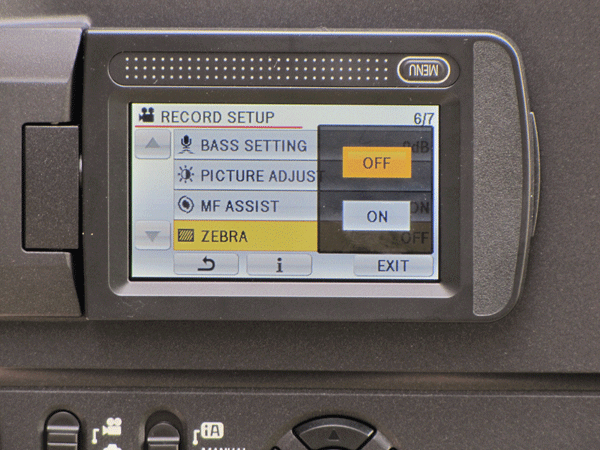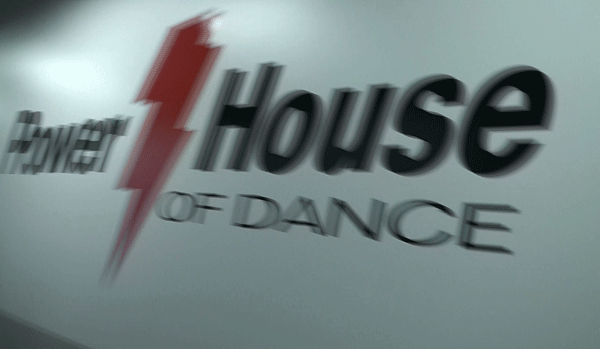Review: Panasonic AG-AC7P Shouldermount Camcorder
A physically similar follow-up to Panasonic's more professional AG-HMC80 AVCCAM, the AC7P uses the more consumer AVCHD format, loses a few ports, and drops $1,200 from the price tag, making the $1,300 (MSRP) AG-AC7 the least expensive actual on-shoulder camcorder you can buy. But what do you get?
The Menu
The AC7 has a basic menu system for setting various parameters, including the data rate for the video. But if you want the highest quality, there's little to adjust in the menus, and when you can adjust something, you first have to try and figure out how that menu works.
For example, audio works as follows: You can adjust the incoming mic level between "Auto" and "Set + AGC." AGC typically means Auto Gain Control, but if I can set my levels manually, is AGC still on? The AGC has an on-screen button that the manual thankfully clarifies-yellow is off; yellow with a Yellow border is on. The manual says that turning AGC off means that "a natural recording can be performed," but with AGC on, "the amount of sound distortion can be reduced." What if I want a natural recording with no distortion?
The on-screen audio meter does not show two separate channels, only a combination of the two. It shows the loudest part of the audio, from either channel. There's also a zebra setting, but it's not adjustable; it's there only to indicate clipping. So getting certain critical feedback from the camera is a bit more challenging than professionals are used to.

You can turn on the Zebra setting in the AC7's LCD menu, but you can't adjust it.
There's also a bevy of items that are buried in menus that really ought to have dedicated physical controls, such as mic level, headphone level, and the like. I understand that this model is less expensive than the HMC80, and that it's unreasonable to expect the same feature set, but with so much camera surface space, there are certain things that beg for dedicated physical controls.
Overall, the menu system, designed for a consumer camcorder, is easy to navigate and adjust. The touchscreen actually makes things easier in that you don't have to cycle through every single item like you do with a scroll wheel; you can directly touch any item on a screen to adjust it. But I expect that, for practical purposes, most of the menu items will be set once and left alone.
In Use
I used the camcorder to shoot a promo video for a local fundraising effort. Working with the footage was similar to that of the HMC80. It lacks the sharpness you'd get with more expensive prosumer camcorders. But this clearly is more affordable than all prosumer camcorders and the larger, on-shoulder size still commands respect. As I shot, I heard several attendees say, "Look out, the professionals are here."
That said, I found myself fighting an overaggressive image stabilization that would hold onto a stable image, despite my trying to pan or zoom, until it gave up and snapped back to center. The slowest speed of the zoom is noticeably fast, so feathering a zoom in and out is futile.
I was shooting a night-time event and the auto settings pushed the camera gain up all the way. But you wouldn't really notice it from looking at the footage. The absence of fine detail partially masks what would have been gain grain, and the heavy AVCHD compression obliterates the rest. So it looks pretty clean, if a little smudgy.
I needed more image than the standard gain was providing, so I leveraged the camera's high-gain Color Night mode feature to get a brighter image. The AC7's image brightened up noticeably, making a room that was dark to the eye look like it was lit brightly. However, there was a lot of motion blur from the camera slowing the shutter speed down to gather more light, and there's no way to adjust the camera's settings to dial back the shutter for less blur.
Moreover, when moving from the dark room to a brighter room, the camera showed me a clean, bright image, but I didn't notice that Color Night mode was still on. Dealing with the resulting strobe-like footage in the edit was a surprise I didn't want. Because of my unfamiliarity with operating the AC7, I would have been better off leaving it in Intelligent Auto mode to better handle the disparate conditions of the event.
Lastly, in an age when a lot of delivery (including this project) happens online, the camcorder's inability to record any progressive standard made a deinterlacing step a requirement that also took away some resolution from the final product. (interlacing.png) The AVCHD codec supports multiple progressive resolutions, none of which are in the AC7.

The non-progressive footage shot with the AC7 necessitated deinterlacing in post.
In the end, though it looks professional because it is bigger, trying to use it as a professional would actually caused problems later. It is a point-n-shoot consumer camcorder at heart. Using it as such would have served me better in the end.